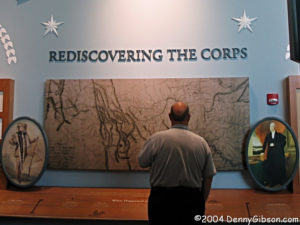 With the “My Wheels” series coming to at least a temporary end, this series about collections of things I’ve visited is being launched to take its place as something to be posted when my real-time world fails to produce an article. The word “caboodle” occurred to me as I was brainstorming titles and I knew it was right the instant I checked the Merriam-Webster definition. The initial chapter concerns a very small caboodle that I didn’t even think of as a group until I had completed it. During its existence, the Corps of Discovery (a.k.a. Lewis & Clark Expedition) endured three winters hunkered down inside some fairly sturdy fortifications. It was while visiting my third, their second, that I realized I’d been to all of them. As the current list of potential subjects for this series is quite small, I’m hoping some memories or realizations will magically appear to lengthen it. Especially since it is being launched during a statewide Coronavirus related “stay at home” order that prevents most of the activities that usually spawn articles here.
With the “My Wheels” series coming to at least a temporary end, this series about collections of things I’ve visited is being launched to take its place as something to be posted when my real-time world fails to produce an article. The word “caboodle” occurred to me as I was brainstorming titles and I knew it was right the instant I checked the Merriam-Webster definition. The initial chapter concerns a very small caboodle that I didn’t even think of as a group until I had completed it. During its existence, the Corps of Discovery (a.k.a. Lewis & Clark Expedition) endured three winters hunkered down inside some fairly sturdy fortifications. It was while visiting my third, their second, that I realized I’d been to all of them. As the current list of potential subjects for this series is quite small, I’m hoping some memories or realizations will magically appear to lengthen it. Especially since it is being launched during a statewide Coronavirus related “stay at home” order that prevents most of the activities that usually spawn articles here.
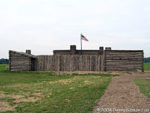
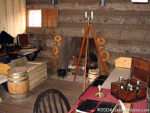
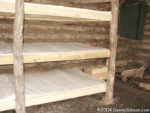 1. All three Corps of Discovery winter encampments functioned as forts and that’s how two of the three were identified. The one that most closely matches our common concept of a frontier fort was not. The place where the corps spent the winter of 1803-4 was named Camp River Dubois. I’m guessing that the word “fort” was not used because the location was near Saint Louis in relatively civilized territory. It was here that they prepared for the journey that would begin in earnest in May of 1804. I visited the site less than a month after the two-hundredth anniversary of that beginning. This structure, as well as the others, is a modern recreation. The originals rotted away long ago.
1. All three Corps of Discovery winter encampments functioned as forts and that’s how two of the three were identified. The one that most closely matches our common concept of a frontier fort was not. The place where the corps spent the winter of 1803-4 was named Camp River Dubois. I’m guessing that the word “fort” was not used because the location was near Saint Louis in relatively civilized territory. It was here that they prepared for the journey that would begin in earnest in May of 1804. I visited the site less than a month after the two-hundredth anniversary of that beginning. This structure, as well as the others, is a modern recreation. The originals rotted away long ago.
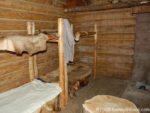
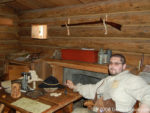
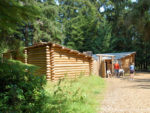 2. In 2008, I found myself on the Oregon coast where the expedition spent its third and final winter away from home. Like many travelers today, Lewis and Clark would spend less time returning from their destination than reaching it and avoid a fourth winter lockdown. In their case, more downstream travel and less getting lost helped considerably. They had traveled as far west as they could and turned their footsteps to the east when they departed Fort Clatsop in the spring of 1806.
2. In 2008, I found myself on the Oregon coast where the expedition spent its third and final winter away from home. Like many travelers today, Lewis and Clark would spend less time returning from their destination than reaching it and avoid a fourth winter lockdown. In their case, more downstream travel and less getting lost helped considerably. They had traveled as far west as they could and turned their footsteps to the east when they departed Fort Clatsop in the spring of 1806.
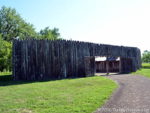
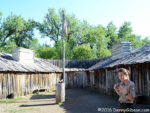
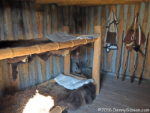 3. It was nearly eight years later when I unexpectedly realized that I was only about thirty miles from Fort Mandan and an associated Lewis & Clark Interpretive Center. I made the short detour, of course, and was able to look over an accurate reproduction of the expedition’s quarters during the winter of 1804-5. The explorers found the fort had been burned to the ground when they passed by here on their way home.
3. It was nearly eight years later when I unexpectedly realized that I was only about thirty miles from Fort Mandan and an associated Lewis & Clark Interpretive Center. I made the short detour, of course, and was able to look over an accurate reproduction of the expedition’s quarters during the winter of 1804-5. The explorers found the fort had been burned to the ground when they passed by here on their way home.
While studying a timeline of the expedition at the Fort Mandan site, it struck me that I had now visited all three of the Corps of Discovery’s wintering locations. Now, three-plus years later, when I needed a new supply of posts that could be made without regard for the date, I chose this set of visits, spread over a dozen years, as the subject for the first of the series. The actual visits are here (Camp River Dubois), here (Fort Clatsop), and here (Fort Mandan).
